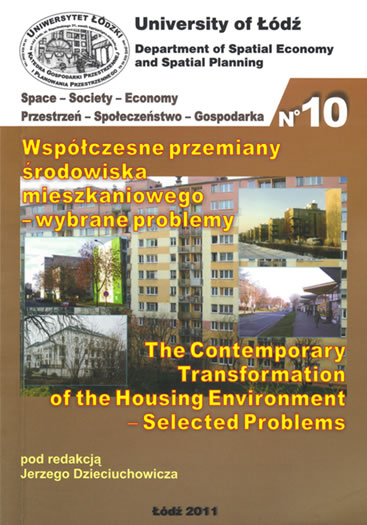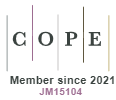CELE I INSTRUMENTY SPOŁECZNEJ POLITYKI MIESZKANIOWEJ
DOI:
https://doi.org/10.18778/1733-3180.10.01Abstrakt
The purpose of the following study is to identify social housing policy within the sphere of the state’s hosing policy. This study delineates basic dilemmas concerning social housing policy; in particular the dilemmas concerning the principles of the allocation of the social housing stock, types of target groups, forms of hosing within the scope of social housing policy, separation of the responsibility for the realization of social aims between the central administration and local authorities, as well as the degree of private sector participation in social housing. Over the last few decades the approach of the UE to the above dilemmas of the social housing policy has lead not only to a high variety of the social housing stock but also to a divergence of housing systems. Thus, it has been postulated that the interference of the UE authorities in housing systems should encompass national diversities. It has also been suggested in the article to introduce a criterion of unsatisfied housing needs in the principles of the allocation of social apartments as a supplement to the income criterion. Such an action, according to the author, should facilitate a more precise fulfillment of the most urgent housing needs. The organizational forms which may complete this task are among all local authorities and non-profit housing organizations cooperating with local authorities. However, these activities should be complemented with an adequate tenement policy which would enable a proper repair management of the social housing stock. This housing allowance instrument would support the most sensitive groups in covering maintenance costs. Furthermore, there should be precise principles according to which the residents will be excluded from the stock or transferred to lower-standard apartments if they fail to comply with the rules of social intercourse or lag behind with rent. The global financial crisis has contributed to a change in the conditions of the social housing policy. The European Commission is gradually changing its attitude towards the state’s support within the scope of social housing. Furthermore, due to the financial crisis there has been an increase in the demand for long-term low-risk investments, which is an extraordinary chance for social housing and the instruments for its funding. These instruments are based on the mortgage banking mechanism or secutitization mechanism.
Pobrania
Bibliografia
Adrzejewski A., 1987, Polityka mieszkaniowa, Wydanie 3 zmienione, Warszawa.
Google Scholar
Bengtsson B., 2001, Housing as a Social Right: Implications for Welfare State Theory, “Scandinavian Political Studies”, No 24.
Google Scholar
DOI: https://doi.org/10.1111/1467-9477.00056
Bengtsson B., 2004, The right to housing in universal and selective housing regimes, ENHR Conference, Cambridge, United Kingdom.
Google Scholar
CECODHAS, 2007, Housing and the European Union Policy, Exchange, Current Issues and Future Challenges, Special Edition, No 7.
Google Scholar
Czischke D., 2005, Social Housing in the EU, Report to the European Commission, CECODHAS, Brussels.
Google Scholar
Drewicz-Tułodziecka A., 2008, Ocena ewentualnych analogii i skutków kryzysu subprime w USA na polskim rynku kredytów hipotecznych, Fundacja na Rzecz Kredytu Hipotecznego, Warszawa.
Google Scholar
EUROSTAT, 2010, Combating poverty and social exclusion 2010 edition, A statistical portrait of the European Union 2010.
Google Scholar
FEANTSA, 2007, Policy Statement, How to allocate social housing The urgency of the housing need of applicants should prevail.
Google Scholar
Federcasa, Italian Housing Federation, 2006, Housing Statistics in the European Union 2005/06, Rome.
Google Scholar
Ghekiere L., 2009, Institutional mechanism and social housing finance: a European comparative perspective in: Financing social housing. After the economic crisis, CECODHAS Seminar, Brussels.
Google Scholar
Główny Urząd Statystyczny, 2008, Gospodarka mieszkaniowa w 2007 r., Warszawa.
Google Scholar
Główny Urząd Statystyczny, 2010, Ubóstwo w Polsce na tle krajów Unii Europejskiej w świetle Europejskiego Badania Dochodów i Warunków życia – EU-SILC 2008, Informacja sygnalna, Warszawa.
Google Scholar
Kemeny J., 1981, The Myth of Home Ownership: Public versus Private Choices in Housing Tenure, London, Routledge.
Google Scholar
Kemeny J., 1993, Comparative rental systems: from implicit Anglo-Saxon model to a theory of change, Working Paper, Swedish Institute of Building Research, Gavle.
Google Scholar
Kemeny J., 1995, Theories of power in Esping-Andersen`s, Three Worlds of Welfare Capitalism, “Journal of European Social Policy”, No 5 (2).
Google Scholar
DOI: https://doi.org/10.1177/095892879500500201
Komisja Europejska, Decyzja Komisji Europejskiej z dnia 28 listopada 2005 r.
Google Scholar
w sprawie stosowania art. 86 ust. 2 Traktatu WE do pomocy państwa w formie rekompensaty z tytułu świadczenia usług publicznych, przyznawanej przedsiębiorstwom zobowiązanym do zarządzania usługami świadczonymi w ogólnym interesie gospodarczym, notyfikowana jako dokument nr C (2005) 2673.
Google Scholar
Lis P., 2005, Koncepcje polityki mieszkaniowej, „Zeszyt Naukowy”, nr 31, Katedra Polityki Gospodarczej i Planowania Rozwoju, Akademia Ekonomiczna w Poznaniu, Poznań.
Google Scholar
Lis P., 2008, Polityka państwa w zakresie finansowania inwestycji mieszkaniowych, Wydawnictwo C. H. Beck, Warszawa.
Google Scholar
Lis P., 2009, Wyzwania dla polskiego systemu finansowania inwestycji mieszkaniowych, [w:] Budowa i utrzymanie domów mieszkalnych, Miejsce i rola mieszkalnictwa w okresie kryzysu gospodarczego, Referaty XX Jubileuszowej
Google Scholar
Konferencji Spalskiej, Polski Związek Inżynierów i Techników Budownictwa, Oddział Warszawski, Polskie Towarzystwo Mieszkaniowe.
Google Scholar
Lis P., 2010a, (w druku), Funkcjonowanie amerykańskiego mechanizmu sekurytyzacyjnego w warunkach kryzysu finansowego, „Zeszyt Naukowy”, Katedra Polityki Gospodarczej i Samorządowej, Wydawnictwo Uniwersytetu Ekonomicznego w Poznaniu, Poznań.
Google Scholar
Lis P., 2010b, (w druku), Rola listów zastawnych we współczesnej bankowości, [w:] Bankowość hipoteczna w dobie kryzysów finansowych, red. A. Szelągowska, Wydawnictwo CeDeWu, Rzeszów.
Google Scholar
Lis P., Zwierzchlewski S., 2006, The concepts of privatization of state-owned enterprises and public housing stock in Poland – similarities and differences, “The Poznań University of Economics Review”, vol. 6, No 2, Wydawnictwo Akademii Ekonomicznej w Poznaniu, Poznań.
Google Scholar
DOI: https://doi.org/10.18559/ebr.2006.2.530
Lyytikäinen T., 2007, A Three Dimensional Model of the Finnish Housing Allowance System and Empirical Analysis, ENHR 2007 International Conference, “Sustainable Urban Areas”, Rotterdam.
Google Scholar
National Board of Housing, Building and Planning, Sweden, Ministry of Regional Development of the Czech Republic, 2005, Housing Statistics in the European Union 2004, Boverket.
Google Scholar
Stephens M., 2003, Social Housing Financing: A Comparative Perspective, UNECE Workshop on Social Housing, Praga.
Google Scholar
Zawiślak M., 2005, Współczesne trendy w europejskim budownictwie społecznym, „Rzeczpospolita”.
Google Scholar
Pobrania
Opublikowane
Jak cytować
Numer
Dział
Licencja

Praca jest udostępniana na licencji Creative Commons Attribution-NonCommercial-NoDerivatives 3.0 Unported License.









